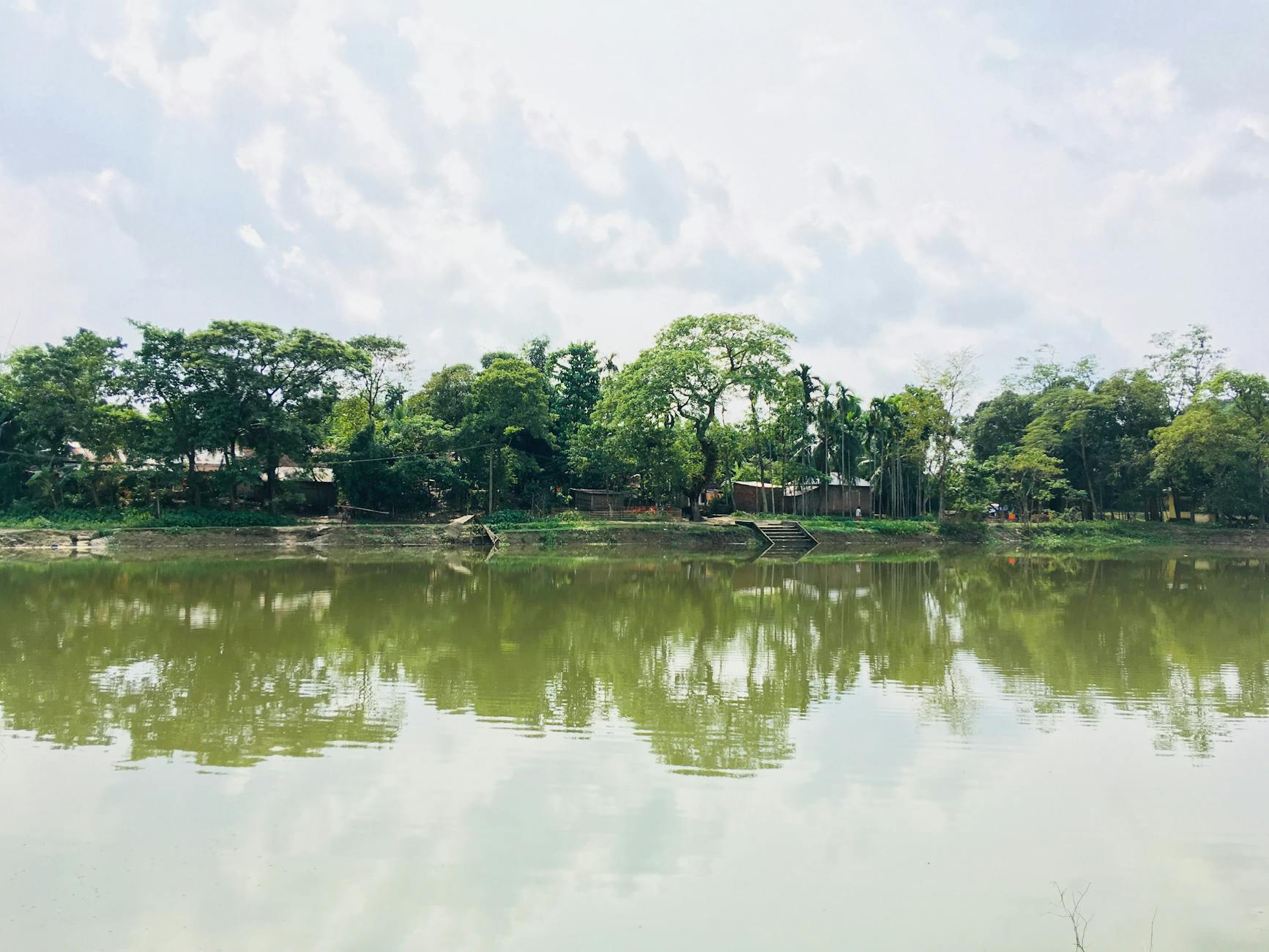Assam and the rain: Deluge in paradise

The enchanting snow-capped Himalayas, verdant landscapes, and pristine rivers make Assam one of the most captivating places in India. However, its serenity has been shattered as the state reels under one of its worst floods in more than a decade. Since March, Assam has received as much as 1,892 mm of rain by mid-June recording the highest June rainfall in 121 years. The outcome has been devastating. More than 120 people have lost their lives and the arterial rail tracks between Assam and neighbouring states such as Meghalaya, Mizoram, and Tripura have been severed. Close to six million have been affected and now dwell in relief camps to wait for the situation to abate. Although the conditions remain grim, it is, sadly, not shocking. Floods in Assam are a natural phenomenon, and the yearly flooding of the Brahmaputra causes damage to life and property. Yet, over the recent decade, this natural phenomenon has turned into a natural disaster with citizens left stranded as their houses get inundated and washed away.
The Brahmaputra
To comprehend the on-ground scene better, let’s start with the geography of Assam and Northeast India. The Himalayan Mountain range, the largest in the world, is broadly classified into three parts—the greater Himalayas, the middle Himalayas, and the lower Himalayas. As the name might suggest, the greater Himalayas consist of some of the tallest peaks in the world with an average elevation of 6,000-8,000 m Above Sea Level (ASL) and the lower Himalayas consist of plains and lush grasslands. The Brahmaputra river originates in the Angsi Glacier in Tibet and flows eastward, parallel to the greater Himalayas. As it reaches Namcha Parva – a mountain on the Tibetan plateau – the river turns south and enters India through Arunachal Pradesh. From there on, it continues to flow southwards and enters the state of Assam. It then passes through the middle of the state before crossing into Bangladesh.
As Assam is a low-lying state, the Brahmaputra when it enters the state, descends from a height of 3000-4000 m ASL and into the Assam valley. To paint a better picture, the town of Dibrugarh in the east of Assam – which lies right in the path of the Brahmaputra – is of a mere elevation of 108 m ASL. Additionally, it also joins in with various other tributaries such as Subansiri, Manas, Beki, etc. as it travels through the gorges. Consequently, as the river flows deeper into Assam, its water flow (the rate at which a volume of water moves across a certain area) exponentially increases, making it foreboding and unstable. In short, the high water flow along with the influx of several tributaries transforms the Brahmaputra into the ominous Mighty Brahmaputra.
Plaguing Factors
Despite its unstable nature, the river is a lifeline to the states of the Northeast. As it leaves the Tibetan plateau, it begins to deposit the nutrient-rich alluvial soil, making the northeast extremely fertile and suitable for agriculture. Yet, during the monsoon season, the heavy rains cause the already humongous and unpredictable river to overflow beyond its floodplains. As stated earlier, due to high water flow, the river runs with such force that it sweeps away anything in its path and erodes the topsoil away. The Assamese government estimates that about 8,000 hectares of land have been lost to erosion caused by the Brahmaputra’s yearly swelling. Accordingly, the state’s riverine fertile soil is threatened by catastrophic erosion, threatening the livelihoods of millions of farmers. However, the flooding of the river alone is not the reason for the repeated occurrence of the floods.
The Northeast, though one of the most ecologically sensitive regions, is one of the poorest parts of India. The dense forests and perennial rainfall have presented a limited opportunity for growth. Therefore, to aid in its development, the Government of India, alongside the concerned state governments have been engaged in various infrastructure projects to connect the region with the other principal networks of the country. But this has come at a cost.
Heavy deforestation, unplanned growth and encroachment on floodplains have multiplied in recent years. So, when there is an excess flow of the river, it invariably causes the inundation of homes and irrigation areas. Another significant reason for such recurrent incidents of flooding is climate change. Astonishingly, Assam which receives rainfall beyond the June-September monsoon season often does not endure excessive rain. But this year, as per the Indian Meteorological Department Report, the state recorded 41 per cent higher rainfall during the pre-monsoon season, which runs from March to May. Furthermore, according to a 2018 study undertaken by the Indian Institute of Tropical Meteorology, Assam has seen a considerable decrease in mean rainfall pattern despite experiencing sudden downpour days, resulting in widespread flooding. Yet, apart from the above causes, a fundamental reason for the cyclic flooding has been the poor construction and maintenance of embankments.
An Unhelpful Solution
Embankments (or levees and dykes) refer to artificial walls that are constructed on the riverbank to control the flow of the river and direct it in a particular way; to avoid flooding the nearby areas. Though the process has been universally accepted as the common norm to control flooding, it has distinct disadvantages. The construction of an embankment narrows down the natural flow of any river. Due to the reduced area through which the river had to flow, the water flow increases tremendously and sometimes, dangerously in some places. This escalates the level of sedimentation of the river and if such sedimentation is not removed through timely upkeep, the river will begin to flow over the embankment, defeating the entire purpose. Moreover, these embankments, if not strong enough, give people a false sense of security. They tend to settle close to the embankment, unaware that they are in much greater danger due to breaches and overtopping.
Yet, despite the legitimate concerns, the construction of embankments is seen as the default option for the authorities in Assam. The state has close to five hundred such structures in place but the majority of them are vulnerable due to lack of maintenance. A Down to Earth Report in 2020 also identified that there existed a contractor-administrator nexus wherein contracts were awarded to those companies that profited from back-to-back construction. Even though other solutions such as building dams and reservoirs have been explored, the costs of such programmes – economic and environmental – are higher than the benefits that could be reaped.
The absence of a holistic approach between the centre and state has aggravated the issue. Moreover, there has been a long history of negligence as well as erroneous priorities regarding the annual overflowing of the Brahmaputra that has existed since colonial times. It initially started when the British began building embankments to prevent the annual flood from destroying the cash crops in Assam and Bihar. Post-independence, the policy was carried forward with successive governments splurging on building more embankments. Yet, with the increasing intensity of the rainfall, these embankments have proved thoroughly ineffective and as a result, the problem continues to persist, and Assam continues to suffer every year.
A Guiding Light
Many environmentalists and policymakers believe that building embankments are only an ad-hoc measure that would not provide lasting relief. Accordingly, any solution to solving the recurring floods must carry with it a long-term vision. And that is where The Netherlands can provide some valuable ideas. Being a flood-prone country, the Dutch authorities seem to have mastered flood control techniques that reduce any large-scale calamity. Though they have installed high-tech sensors and other advanced infrastructure alongside the rivers, it is their ‘Room for River’ initiative that has drawn praise from all over the world.
The project’s primary principle is to offer a greater area for the river to flow during floods. Among many measures, one of the simplest techniques that were employed was to relocate the embankments further away from the rivers, thereby providing a larger area for the river to flow past. This helped to lower the sedimentation, which would have otherwise caused the river to rise. Within the enclosed space, trees were planted to prevent soil erosion and retain the nutrients of the topsoil. In addition, the floodplains and the riverbed were also dug deeper, enhancing the flow of the river. Furthermore, the river’s environs were enhanced to act as natural sponges, storing surplus flood water.
Looking Ahead
Although Assam is the most flood-prone state in India, states such as Mizoram, Meghalaya, Bihar, and Kerala also battle with incessant rainfall that leads to frequent inundation. Hence, long-term sustainable solutions must be discussed and implemented to prevent the disastrous annual flooding that continues to claim more and more lives. At the same time, it is not always necessary that huge infrastructural projects are the most efficient. To focus on a river’s natural environment and its flow, and then construct suitable structures accordingly is better and cheaper in the longer run. India could analyse the ‘Room for River’ initiative and customise it as per its requirements. For example, given the high population density in India, relocating the embankments further away might throw in some unique challenges such as resettling the population to another place and providing them suitable compensation. One should also consider the agricultural impact it may have on the farmers if such widening of the floodplains is considered. Similarly, digging deeper into the river bed may be easier in a river that stays relatively calm. However, the same technique could be difficult to implement in a river as unstable as the Brahmaputra. Yet despite the challenges, as India aims toward economic growth in the face of changing climatic conditions, better flood prevention methods will play a key role in holistic development.








